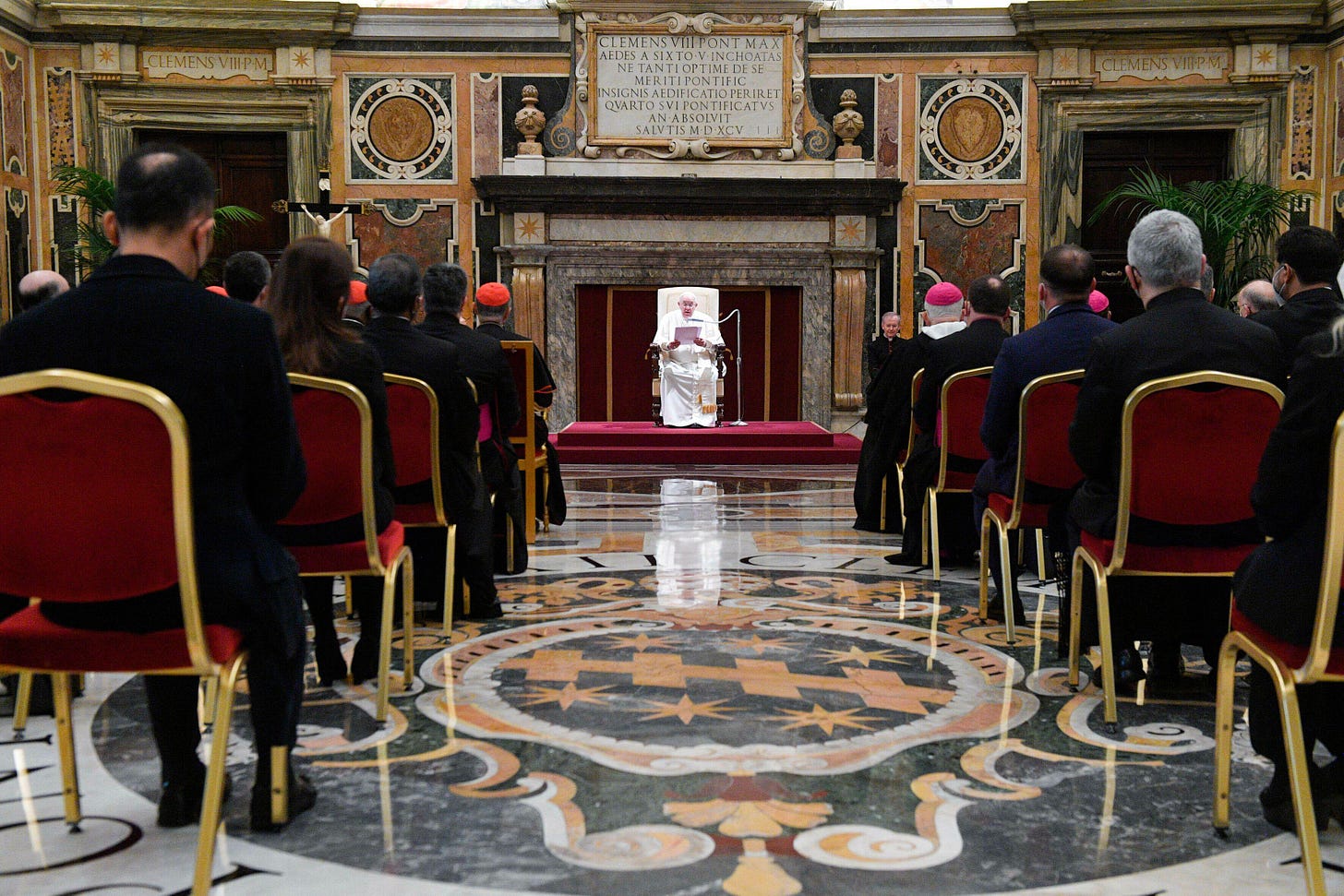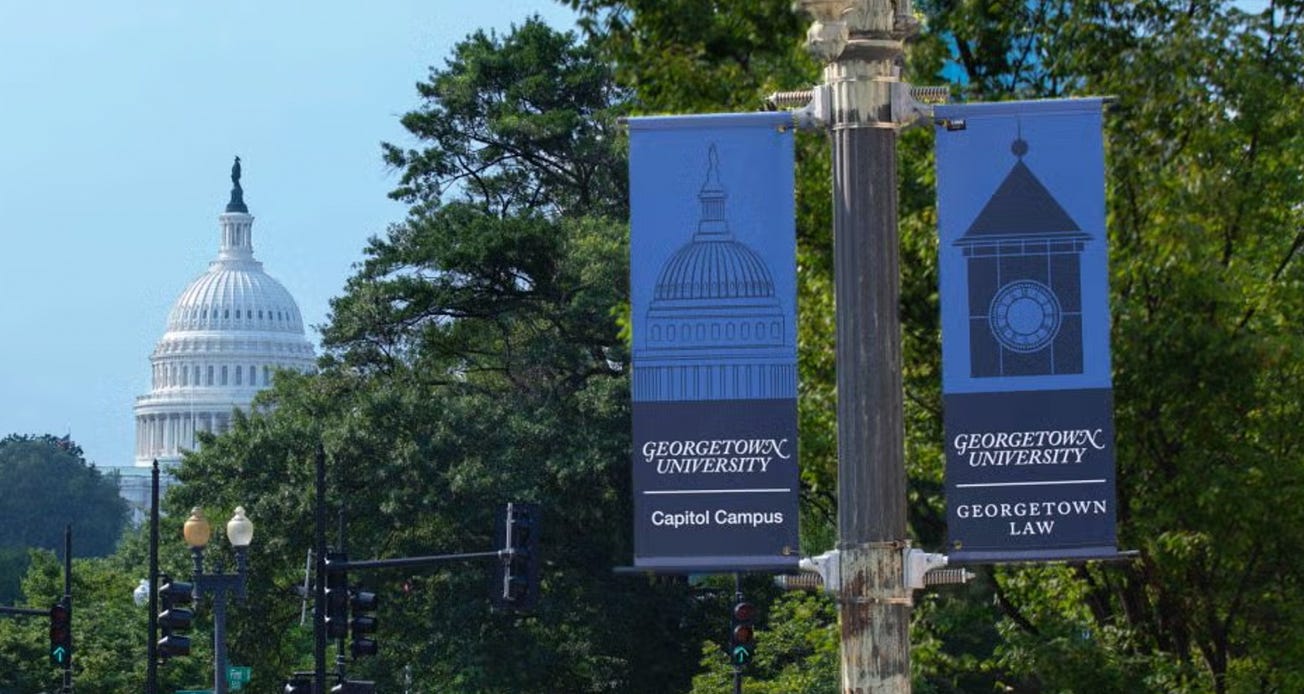Pope Francis issued on Monday a new motu proprio reorganizing the internal structures of the Congregation for the Doctrine of the Faith. The law effectively confirmed the congregation’s current competencies, and created a new senior role in the department.
The new law signals that a long-expected radical shift in the CDF’s purpose and power seems off the table — and with it the chances of any epochal reordering of the Vatican’s departmental landscape.

The new motu proprio, officially titled Fidem servare, (even though the original text of promulgation is in Italian, not Latin), is one of several changes to the Vatican’s departments made by Pope Francis ahead of the long-expected promulgation of a new apostolic constitution, Praedicate evangelium, which would replace Pastor bonus as the governing constitution for the Roman curia.
But, with Praedicate evangelium’s release the subject of endless delays, a mounting number of piecemeal reforms have been made across the curia, including the pope’s new policy for the CDF.
And while it remains to be seen whether the eventual reforming constitution will offer a more exhaustive presentation of all the CDF’s work and competencies, the general impression given by Fidem servare is that future reforms for the congregation will be less dramatic than previously proposed.
While some influential Vatican commentators predicted this weekend that a “drastic downsizing” of the department was coming, Monday’s motu proprio broadly confirmed the responsibilities of the CDF as they have existed in practice under Pastor bonus.
Most notable is that the motu proprio appears to confirm the status of the CDF, and even enhanced its prestige, at least by the informal metric of adding a second secretary to the department. And it has not adopted the more radical changes to the CDF proposed in early circulating versions of Praedicate evangelium.
For example, a draft circulated in 2019 would have recognized the “primary competence” and “genuine doctrinal authority” of individual bishops and even episcopal conferences, and have relegated the CDF “cooperation” with local Churches, and bound to “apply the principle of subsidiarity” to the “measures to be adopted for the protection of the faith.”
Those measures were widely understood in 2019 as a downgrading of the congregation’s authority, and have been widely expected to be eventually published. But none of those provisions were present in the text promulgated by Pope Francis on Monday.
Similarly, the 2019 draft of Praedicate evangelium would have directed the CDF’s doctrinal work towards uniting “faithfulness to traditional doctrine with the courage to seek new answers to new questions” — a phrase that drew questions from theologians uncertain of its meaning or intent.
Monday’s motu proprio, on the contrary, effectively repeated the 1988 description of the CDF’s doctrinal portfolio contained in Pastor bonus, adding only new language defining the CDF’s work as “in the service of evangelization,” — In line with the pope’s goal of reforming curial offices to reflect the Church’s primary mission to spread the Gospel.
As for how the CDF relates to other Vatican departments, Fidem servare appears to strengthen the congregation’s hand, at least in some cases.
For example, the 2009 apostolic constitution Anglicanorum coetibus, which created diocese-like structures in the Church to receive former Anglicans into the Catholic Church, provided that the personal ordinariates, of which there are currently three, are “subject to the Congregation for the Doctrine of the Faith, and the other Dicasteries of the Roman Curia in accordance with their competencies.”
The text has led to a dispute between the CDF and the Congregation for Divine Worship over which department has oversight of the ordinariates’ liturgy.
In 2019, the CDF promulgated a decree authorizing a new liturgical text for the ordinariates after “consulting” with the CDW, while Traditionis custodes, which provided new norms regulating the Extraordinary Form of the Mass in the Latin Church, assigned authority over its implementation to the CDW, with no mention of the CDF, even for the ordinariates.
Monday’s text, however, now reserves all questions regarding the ordinariates to the CDF.
In the big picture, while none of Monday’s changes to the CDF’s structures can reasonably be called “drastic,” the relative modesty of their scope may itself be a strong indicator of what is to come.
It is unlikely that Francis would issue a law effectively solidifying the status quo at the CDF if he were set on upending the congregation in a few months as part of a larger reform — indeed, the pope has repeatedly spoken of the piecemeal reforms of the curia he’s undertaken in recent years as an integral part of the larger constitutional project.
In that light, it seems increasingly sure the structure and status of the CDF at the Vatican is now on firmer ground than it has been in the nine years since Francis announced his reforming agenda.
And if the CDF is set to remain fixed in its authority and work, the chance seem more remote than ever that any eventual new constitution will actually cause the curial earthquake that commentators have long predicted.




